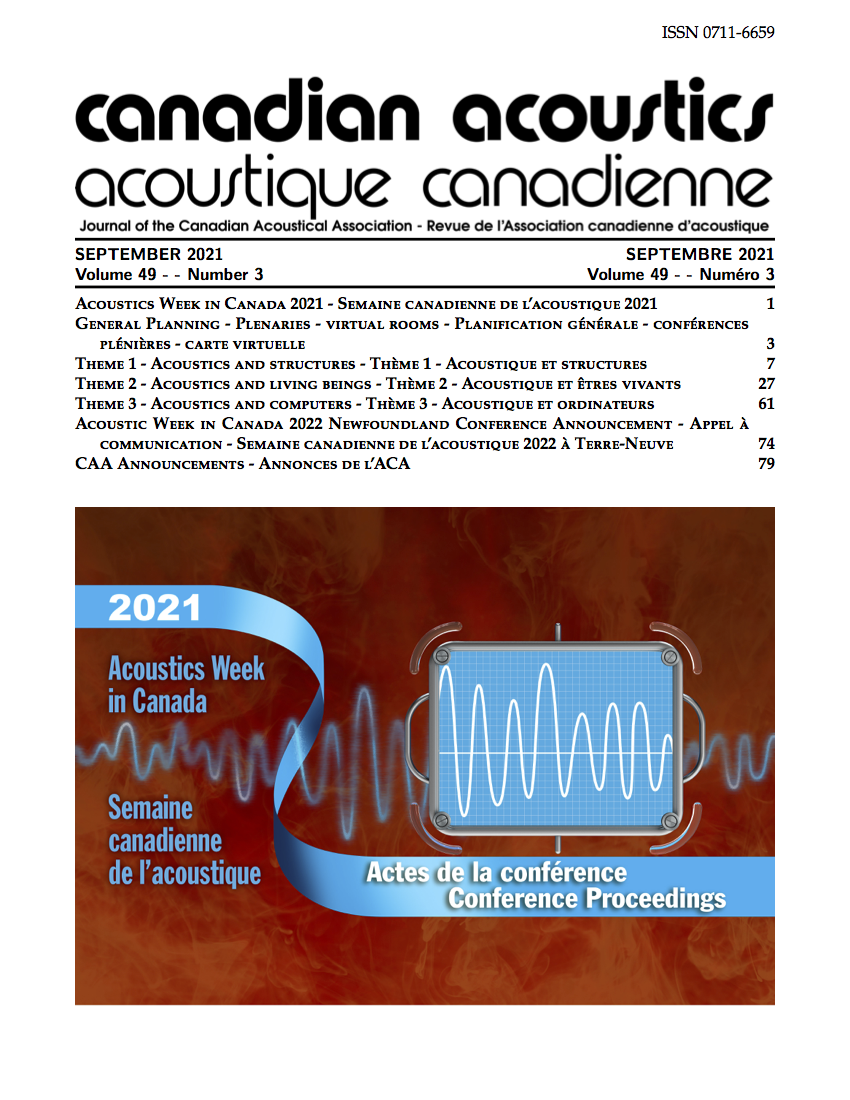The effects of microgravity on tongue height
Résumé
A previous investigation comparing astronaut speech during and after the Apollo 11 mission reported a significant increase across all vowel formants during microgravity exposure. This result was interpreted as indicating that the tongue is lowered in microgravity conditions [Yu & Hansen, 2017, JASA, 141(3), 1605-1614]. However, we note that the microgravity condition speech data used in this analysis were routed through telephone channels while the earth condition data were not. As telephone speech is characterized by a marked increase to formants [Nolan, 2002. Forensic Ling. 9(1), 74-82], it is unclear whether any observed effect was due to microgravity or telephone bandwidths. Using higher quality audio from the STS-129 and 135 missions and linear mixed effects models, we compared the first vowel formant (F1) of two astronauts immediately before and during exposure to microgravity during space travel. We found no significant interaction of condition in our models, suggesting microgravity does not have a substantial effect on tongue height. We conclude that previous observations of microgravity-induced tongue lowering may actually be a product of telephone bandwidth changes. Future investigations of astronaut speech should take care to ensure audio bandwidth is comparable across conditions.
Fichiers supplémentaires
Publié-e
Comment citer
Numéro
Rubrique
Licence
Author Licensing Addendum
This Licensing Addendum ("Addendum") is entered into between the undersigned Author(s) and Canadian Acoustics journal published by the Canadian Acoustical Association (hereinafter referred to as the "Publisher"). The Author(s) and the Publisher agree as follows:
-
Retained Rights: The Author(s) retain(s) the following rights:
- The right to reproduce, distribute, and publicly display the Work on the Author's personal website or the website of the Author's institution.
- The right to use the Work in the Author's teaching activities and presentations.
- The right to include the Work in a compilation for the Author's personal use, not for sale.
-
Grant of License: The Author(s) grant(s) to the Publisher a worldwide exclusive license to publish, reproduce, distribute, and display the Work in Canadian Acoustics and any other formats and media deemed appropriate by the Publisher.
-
Attribution: The Publisher agrees to include proper attribution to the Author(s) in all publications and reproductions of the Work.
-
No Conflict: This Addendum is intended to be in harmony with, and not in conflict with, the terms and conditions of the original agreement entered into between the Author(s) and the Publisher.
-
Copyright Clause: Copyright on articles is held by the Author(s). The corresponding Author has the right to grant on behalf of all Authors and does grant on behalf of all Authors, a worldwide exclusive license to the Publisher and its licensees in perpetuity, in all forms, formats, and media (whether known now or created in the future), including but not limited to the rights to publish, reproduce, distribute, display, store, translate, create adaptations, reprints, include within collections, and create summaries, extracts, and/or abstracts of the Contribution.


